

The Sledge
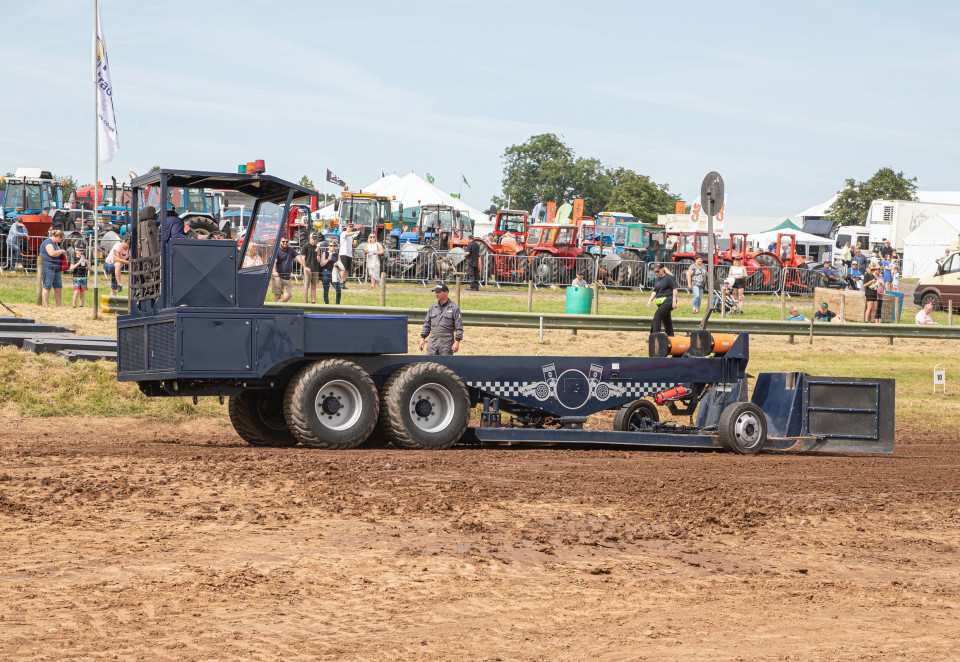
How important is the sledge?
A weight transfer sledge is the only true way to provide a fair and comparable level of competition for all classes of tractor. It is a very clever mechanical device that has the ability to transfer weight from the wheels at the back to the pan at the front. During a pull, the sledge sits on the starting line as a rolling weight, but gradually transforms into a dead-weight, the further down the track it goes.
The concept is to provide a fair means of giving all classes of tractor a comparable load to pull, thereby creating a fair competition for all. And this is achieved using a weight box that is mechanically driven by the sledge's wheels, as the tractor pulls the sledge down the track. So the further you pull, the harder it gets.
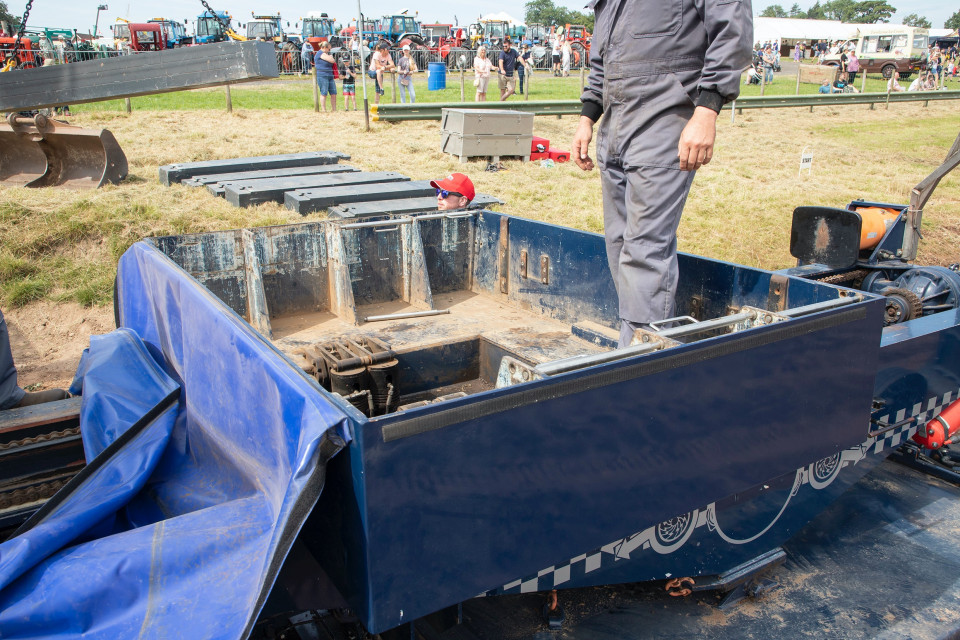
How does transfer weight work?
The amount of weight transfer is achieved by a combination of factors. These include adding or removing weight from the weight box, and/or changing the speed that the weight box accelerates along the chassis of the sledge. Both have the effect of increasing the amount of load the tractor has to pull, by generating a greater push-down load at the front of the sledge. This makes the sledge progressively harder to pull.
If you've got the power, you need to leave the start line and pull as fast as you can to accelerate quickly and gain momentum. Lower powered tractor classes will need less weight and a slower box speed than more powerful tractor classes. But the end goal is the same - to bring each tractor to a stop somewhere down the track, ideally, between 80-110m. So get moving!
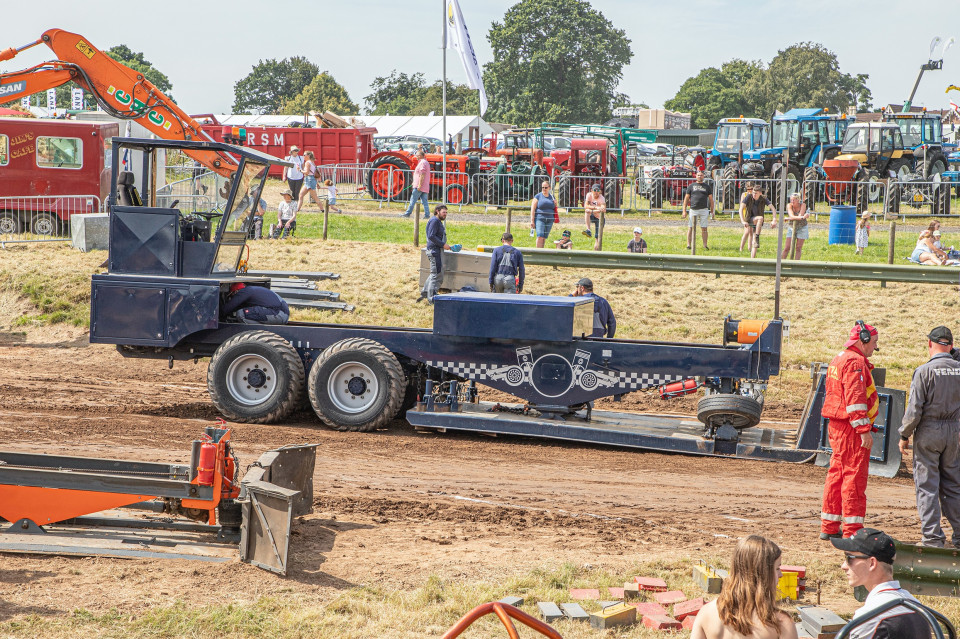
Weight box movement
This photo shows how the weight box has been deliberately driven forward to a middle position on the chassis, so the sledge team can gain access to the box for the purpose of adding or removing weight to suit the class of tractors being pulled.
Note how the sledge pan (the big flat plate that sits on the ground) is carried at the rear. This is to help tractors to accelerate quickly away from the start line, before the back of the pan drops - this is yet another adjustable setting determined by the sledge team, and is set according to the class of tractors being pulled.
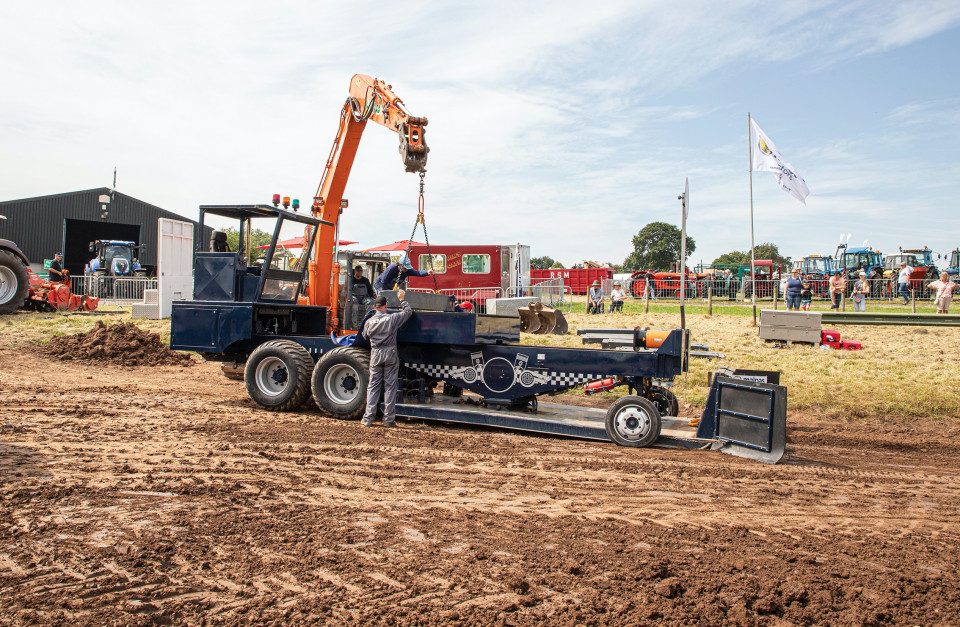
Changing box weight
Every class of pulling tractor needs a different amount of box weight. This is to manage the amount of horsepower on the front of the sledge - it could range from a 500-800hp Super Farm tractor up to a 10,000hp multi-engined Heavy Modified.
The end goal is the same - let the tractors run, but stop them near to, or at the end of the track. Those passing the 100m-mark have achieved a full pull, and qualify for a pull-off. This is where the sledge is then made heavier still to determine an outright winner.
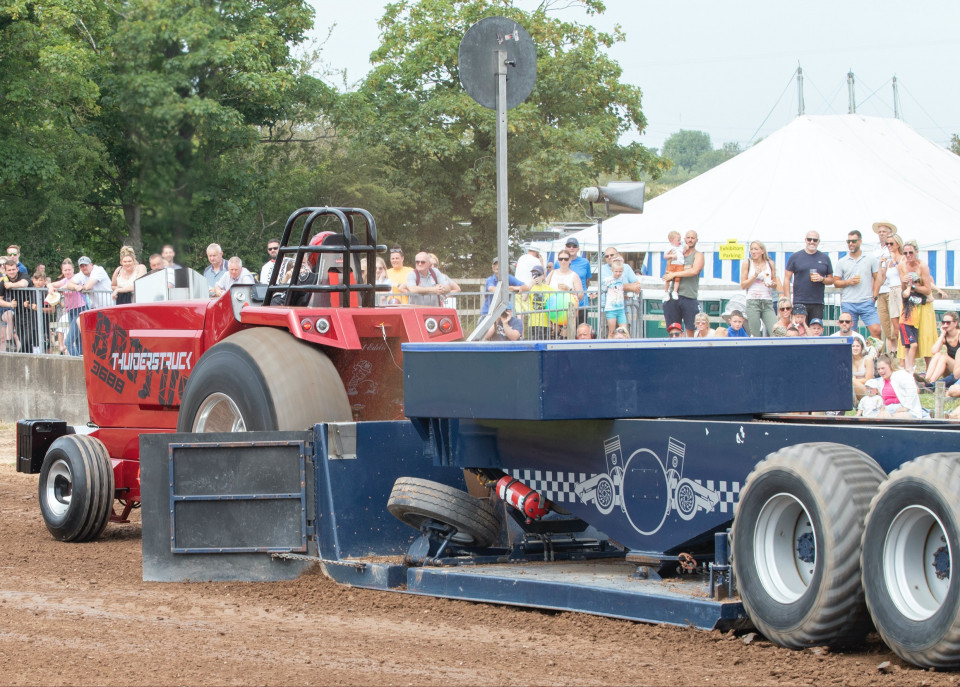
Weight box topped
As the tractor pulls the sledge down the track, the weight box travels forward adding downward pressure and load onto the whole of the pan, while simultaneously removing a proportion of weight from the sledge drive wheels. This is weight transfer in action.
In this position, maximum sledge weight is transferred onto the pulling tractor and the entire pan is pushed into the surface of the track to generate maximum resistance. Before the start of a class, the sledge team decides at what point along the track the box reaches this 'topped' position. It could be anywhere from 60-90m, depending on tractor power, box weight and track condition.
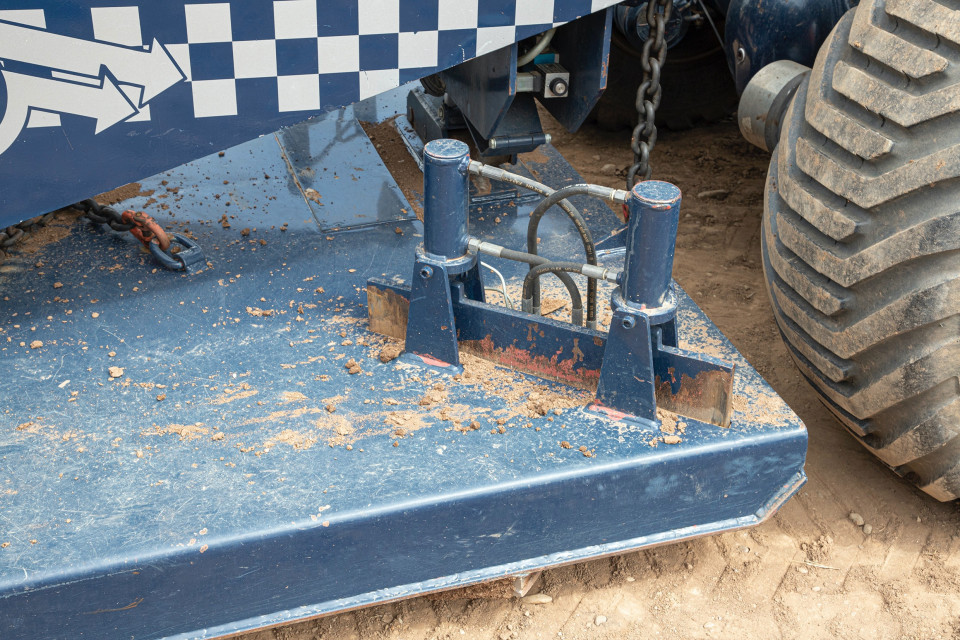
Extra stopping force available
The pan has these hydraulically adjustable vertical blades along its back edge. These can be used to dig into the ground and act like an anchor when weight transfer alone is not enough to stop a very powerful class of tractors. The amount of blade protruding beneath the pan can be varied from zero to around 75mm, to create the desired stopping effect.
All pulling tracks vary in grip and surface texture, so these additional adjustments enable the sledge team to fine-tune their own settings to allow tractors in all classes to get up and run, but still be able to keep them under control. A capable sledge run by a great team, helps to create some of the best, and fastest pulling.
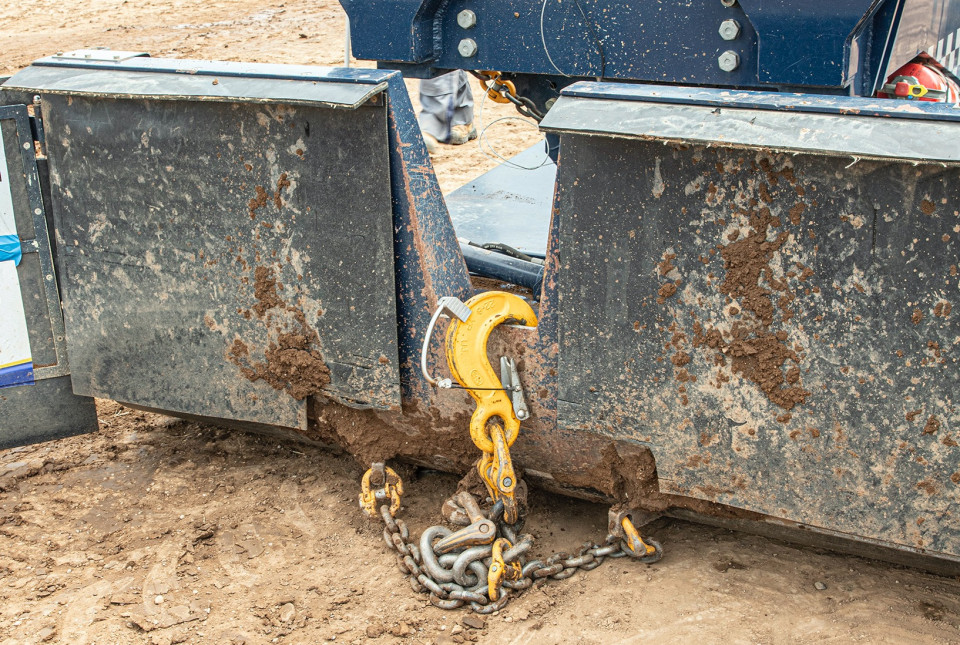
The hook
This heavy-duty hook, is the only means of pulling the sledge. It gets placed onto the pulling tractor’s drawbar, and the tractor eases forward to tighten the chain before the tractor is allowed to leave the start line.
Should the tractor and hook part company, the thin wire and clip above it is simultaneously connected to the tractor’s kill switch. Like a safety break-away wire on a car trailer or caravan, this function simply kills the pulling tractor’s engine. The sledge operator can activate this too, if a problem develops.
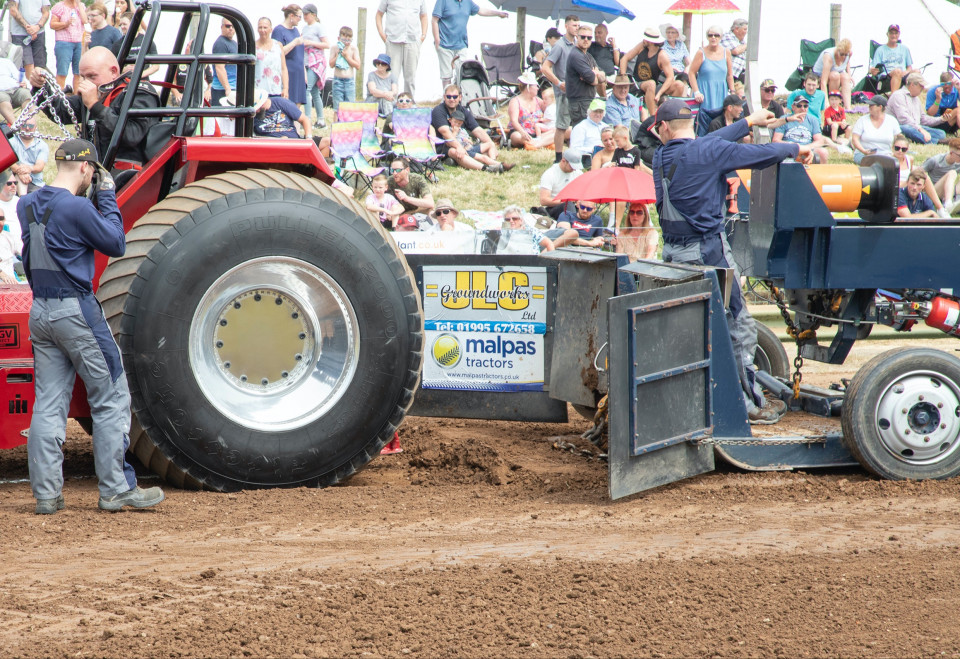
Grip by friction
Puller tyres have shallow treads for a reason – deep tread would dig into the track and throw lots of soil in front of the sledge, making it much harder to pull. So spin those wheels fast, get grip from friction, and race down the track with the sledge.
This tractor spun to a halt when the weight box topped-out but during its journey down the track, those shallow treaded tyres threw very little dirt against the buck-board at the front of the pan.
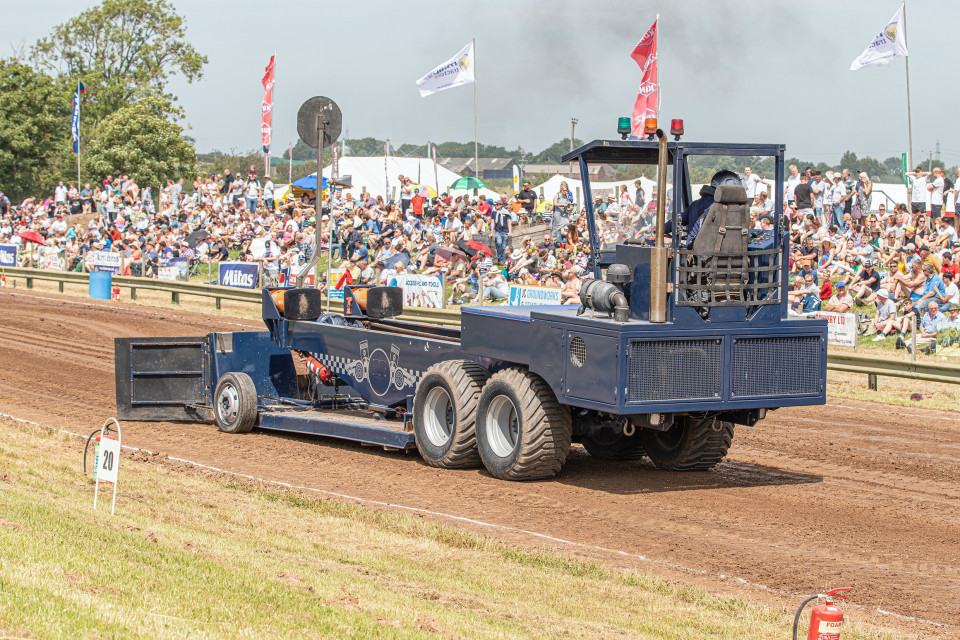
Back to the start line
The BTPA currently uses the Terminator sledge run by Performance Sledging. This is a self-propelled sledge with its own power unit and drivetrain, which alows the sledge to move itself without a tow-back tractor.
By resetting the weight box over the rear wheels, Terminator uses the hydraulic push-down wheels on the pan to lift the front of the sledge off the ground, so it can drive effortlessly back to the start line ready for the next tractor.
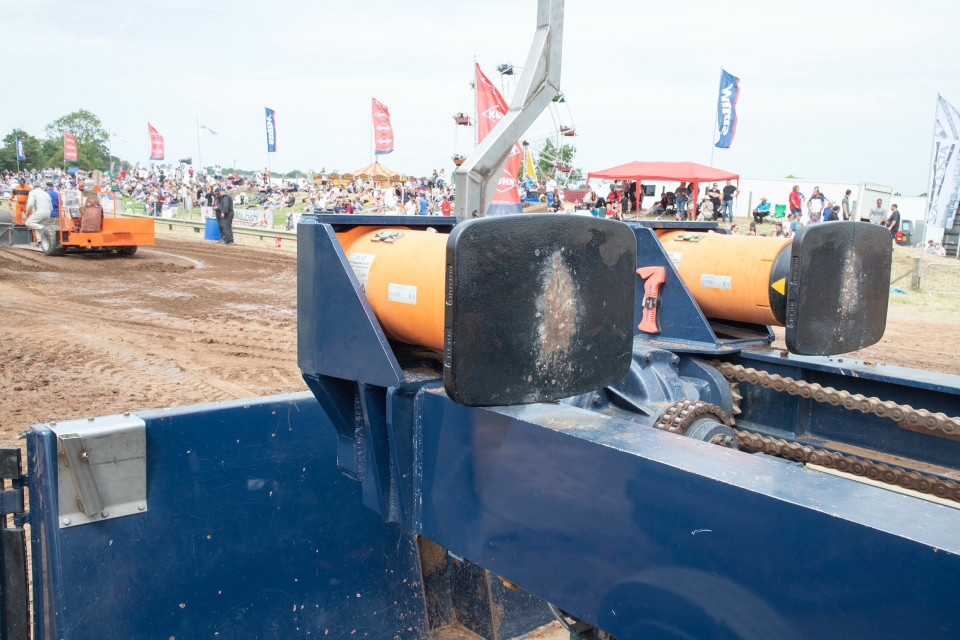
Buffers
Orange-coloured train-type buffers on the front of the sledge chassis are part of an in-built safety system that prevents the box from being slammed up against the headboard. These work in conjunction with box brakes and other integral safety devices, to bring the outfit to safe and a rapid stop should there ever be a sledge malfunction.
European SIT (Sledge Inspection Team) has ultimate control over sledge protocol and ratings, along with regular testing to provide either gold, silver or bronze status. Terminator is a silver-rated sledge and can pull any of the BTPA and European full-sized tractors at domestic events. 950kg mini pullers run by the Power Pulling Association (PPA), use a scaled-down sledge.
